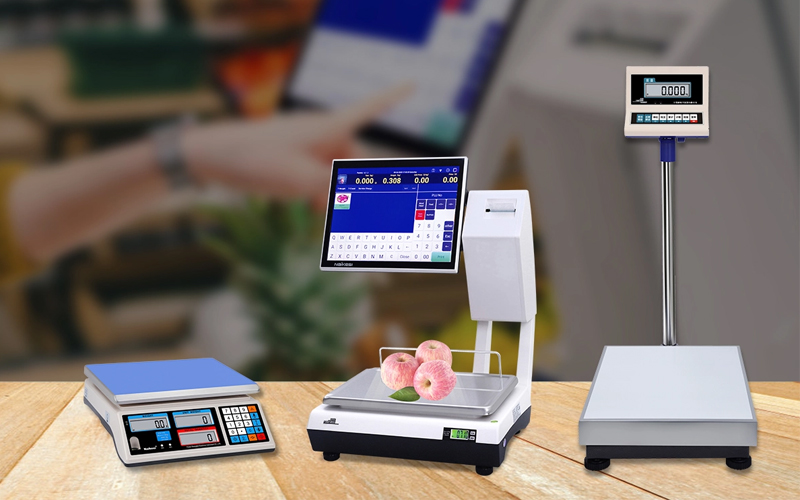The digital scale is nearly ubiquitous in everyday life and work, playing an important role in everything from measuring ingredients in the kitchen to ensuring precision measurements in industrial production. So, how does a digital scale work? Here we present a detailed analysis of the working principle of the digital scale.
The digital scale, including Naikesi's digital industrial weighing scale, MDS-E barcode weighing scale, BL-A self checkout scale, etc., is typically composed of four main components: a sensor, a converter, a processor and a display. The sensor is responsible for sensing the weight of the object and converting it into electrical signals; the converter will transform these electrical signals into digital signals; the processor will process these digital signals and calculate the object's weight accurately ; finally, the processed weight value will be displayed.
The sensor of the digital scale usually adopts the strain gauge sensor, and its working principle is based on the strain effect produced when the object is subjected to force. When an object is placed on the scale, the strain gauges inside the sensor are subjected to forces and undergo small deformations, which result in changes in the resistance of the strain gauges. The sensor senses the weight of the object by measuring this change in resistance value.
The electrical signal output by the sensor is an analog signal that needs to be converted into a digital signal by a converter.Converters typically use analogue-to-digital converters (ADC) to achieve this function. After the ADC converts the analog signals into digital signals, the processor processes them. The processing includes signal amplification, filtering, linearisation and other steps to ensure that the final output weight value is accurate and reliable.
After the processor processed weight value will be sent to the display for display. The display is typically an LED or LCD display that visually shows the weight of the object. To ensure the accuracy of the digital scale, it also needs to be calibrated periodically. During calibration, the digital scale can be verified using a standard object of known weight, and the scale's parameters can be adjusted to eliminate errors and ensure the accuracy of the measurement results.
In summary, the working principle of digital scale is to sense the weight of the object through the sensor and convert it into electrical signals; then through the converter to convert the electrical signals into digital signals, the processor to process these digital signals; and finally through the display to show the weight of the object. Understanding how digital scale works helps us to better use and maintain these devices to ensure the accuracy and reliability of the measurement results. If you want to know more about digital scales and electronic weighing scale wholesale, feel free to contact Naikesi.

Electronic weighing scale 30kg
Electronic weighing machine for laboratory
Cash register with weighing scale ADS-CF
Types of weighing balance in pharma
Retail weighing machine market sector
Precision checkweighing in the food industry